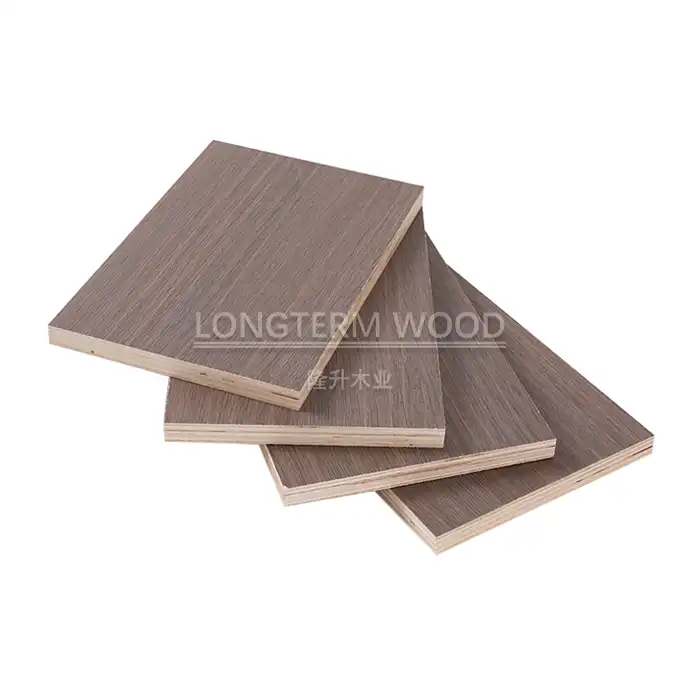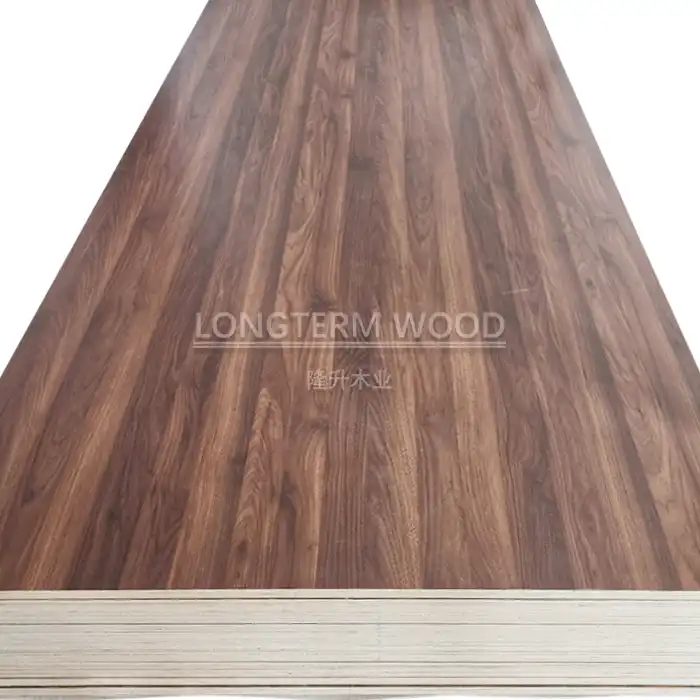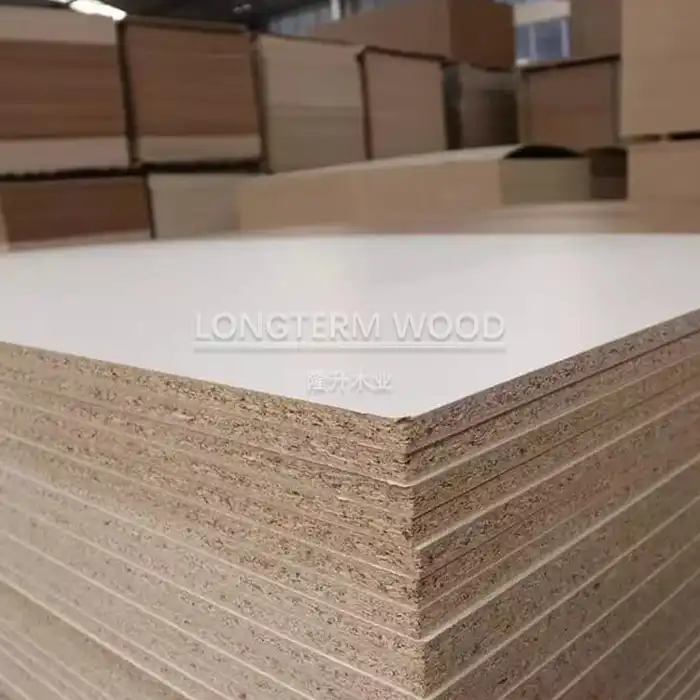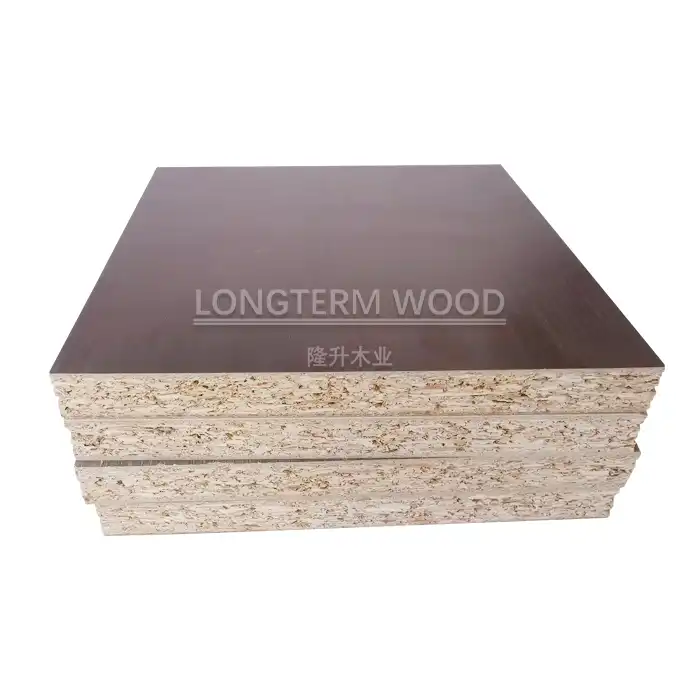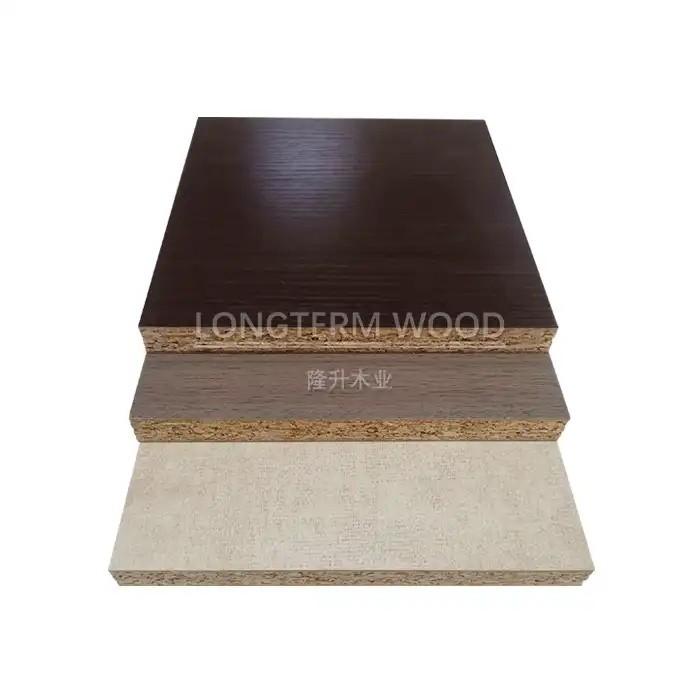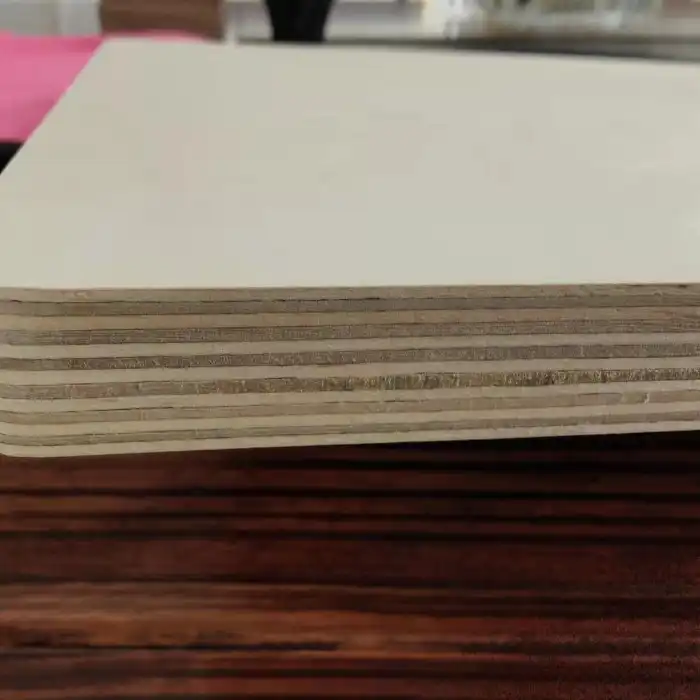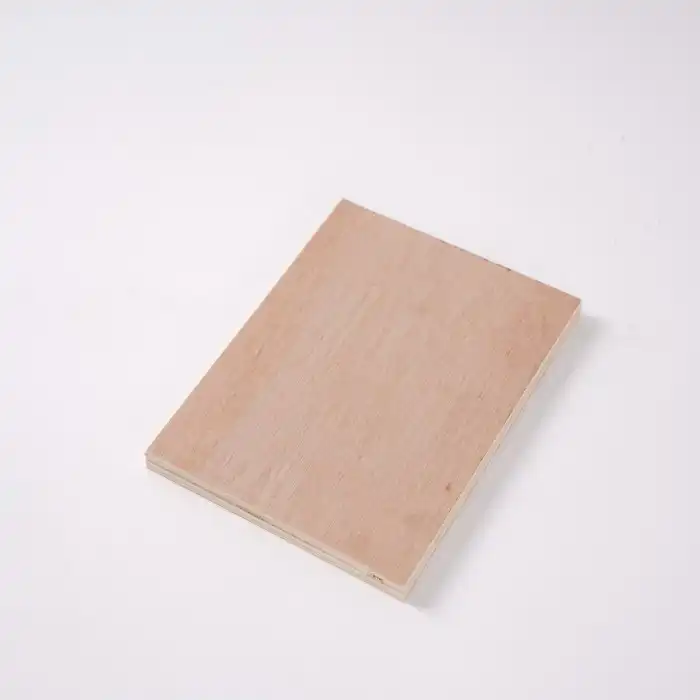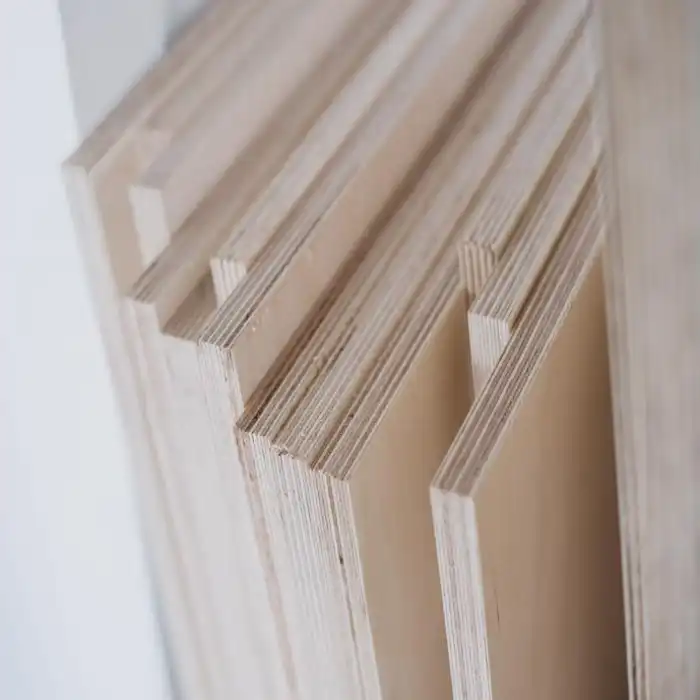
Can Melamine Plywood Create Modern Minimalist Designs?
2025-04-25
In the realm of contemporary interior design, the pursuit of clean lines, uncluttered spaces, and functional aesthetics has led designers and homeowners alike to seek versatile materials that can bring minimalist visions to life. Melamine plywood stands at the forefront of this design revolution, offering a perfect marriage of form and function. This blog explores how this innovative material serves as an ideal canvas for creating stunning modern minimalist designs that epitomize elegance through simplicity.
Melamine plywood absolutely excels at creating modern minimalist designs due to its sleek finish, clean aesthetic, and remarkable versatility. The smooth, uniform surface provides the perfect foundation for the uncluttered look essential to minimalism, while its wide range of colors and textures—from pristine whites to natural wood grains—allows designers to maintain visual simplicity without sacrificing character. Melamine plywood's durability ensures these minimalist installations maintain their crisp appearance for years, while its adaptability makes it suitable for furniture, wall panels, and storage solutions that emphasize both form and function—the cornerstone principles of minimalist design philosophy.
The Perfect Marriage: Melamine Plywood and Minimalist Design
Clean Aesthetics for Contemporary Spaces
The essence of minimalist design lies in its clean, uncluttered approach that emphasizes "less is more." Melamine plywood perfectly complements this philosophy with its smooth, uniform surface that creates a pristine canvas for modern spaces. Unlike traditional materials that might display inconsistencies or imperfections, melamine plywood offers a flawless finish that immediately elevates any minimalist interior. The material's consistent color and texture allow designers to achieve that perfect balance of simplicity and sophistication. When used for cabinetry, wall panels, or furniture in open-concept living spaces, melamine plywood creates visual continuity that enhances the sense of spaciousness—a key element in minimalist design. The material's ability to present clean lines and sharp edges fulfills the minimalist mandate for precision and intentionality in every design element. Many leading interior designers appreciate how melamine plywood can transform ordinary spaces into extraordinary examples of minimalist elegance without overwhelming the senses, proving that this versatile material is indeed a cornerstone of contemporary minimalist aesthetics.
Versatility in Color and Texture Options
Minimalist design doesn't mean sacrificing personality for simplicity—and melamine plywood ensures designers don't have to make that compromise. The remarkable range of color options available with melamine plywood spans from crisp whites and soft neutrals to bold monochromes and subtle wood grain reproductions, offering endless possibilities for minimalist expression. This versatility allows designers to create spaces that feel warm and inviting rather than cold and sterile, a common misconception about minimalist interiors. Texture plays an equally important role in adding dimension to minimalist spaces, and melamine plywood delivers with options ranging from ultra-smooth high-gloss finishes to subtly textured matte surfaces that add tactile interest without visual clutter. These texture variations create subtle depth in minimalist designs, allowing light to interact with surfaces in ways that change throughout the day, bringing dynamic elements to otherwise simple spaces. The ability to mix and match these finishes within the same project—perhaps pairing high-gloss white with textured wood-look melamine plywood—creates sophisticated minimalist compositions that feel intentional and refined rather than boring or one-dimensional. This remarkable adaptability makes melamine plywood an ideal material for designers seeking to create distinctive minimalist spaces with personality and character.
Functional Simplicity in Implementation
Minimalism celebrates the beauty of functional simplicity, and melamine plywood embodies this principle perfectly. The material's structural integrity allows for clean-lined furniture designs with fewer visible supports and hardware, creating the floating, weightless aesthetic that minimalist design often strives to achieve. Melamine plywood enables designers to create seamless built-ins and storage solutions that disappear into walls, maintaining the clutter-free environment essential to minimalist living. This integration of storage is particularly valuable in compact urban spaces where maximizing functionality without visual congestion is paramount. The precision-engineered nature of melamine plywood means components fit together with minimal visible joinery, supporting the minimalist ideal of visual continuity and uninterrupted planes. Furniture and architectural elements crafted from melamine plywood can incorporate hidden handles, push-to-open mechanisms, and other hardware-free solutions that maintain clean, unbroken surfaces—a hallmark of sophisticated minimalist design. The material's workability also allows for the creation of multi-functional pieces that serve several purposes without excess ornamentation, perfectly aligning with the minimalist principle that every element should earn its place through both beauty and utility.
Practical Applications of Melamine Plywood in Minimalist Interiors
Sleek Cabinetry and Storage Solutions
Minimalist interiors demand storage solutions that conceal clutter while maintaining clean lines—a challenge melamine plywood meets exceptionally well. The material's dimensional stability prevents warping and ensures cabinet doors remain perfectly aligned over time, preserving the precise geometry essential to minimalist aesthetics. High-quality melamine plywood offers exceptional edge finishing possibilities, allowing designers to create seamless cabinetry with either invisible joints or intentionally expressed edges that become design features themselves. The material's structural strength supports the creation of longer spans without visible supports, enabling floating vanities and wall-mounted storage units that contribute to the minimalist goal of visual lightness and space enhancement. In kitchens, where functionality and aesthetics must coexist harmoniously, melamine plywood cabinetry provides durable surfaces that resist moisture, stains, and heat—maintaining their pristine appearance despite heavy use. The material's adaptability allows for innovative storage solutions like full-height cabinetry that disappears into walls, hidden pantries, and integrated appliance housings that maintain visual continuity throughout minimalist interiors. With proper manufacturing techniques, melamine plywood cabinets achieve the perfect right angles and precise reveals that distinguish high-end minimalist installations from more ordinary cabinetry, demonstrating how this versatile material supports the meticulous standards of minimalist design execution.
Wall Panels and Room Dividers
In minimalist interiors, walls and dividing elements serve as more than mere boundaries—they become architectural statements, and melamine plywood excels in this application. Used as full-height wall paneling, melamine plywood creates uninterrupted surfaces that visually expand spaces while adding subtle texture and warmth that bare painted walls often lack. The material's dimensional stability prevents the buckling and seam separation that can occur with other paneling materials, ensuring minimalist interiors maintain their crisp, intentional appearance over time. In open-concept spaces, melamine plywood room dividers provide functional separation without sacrificing the sense of openness, especially when designed as partial-height elements or screens with geometric cutouts that filter light while maintaining visual connection. The precision cutting capabilities of melamine plywood allow for the creation of slatted or perforated panels that add visual rhythm and acoustic benefits to minimalist spaces—solving practical concerns without compromising aesthetic purity. For truly distinctive minimalist interiors, designers often specify melamine plywood wall treatments with integrated functionality, such as panels concealing storage, fold-down desks, or media components that disappear when not in use. The material's versatility also supports the creation of sculptural wall elements with three-dimensional facets or curves that serve as focal points in otherwise restrained minimalist rooms, demonstrating how melamine plywood can be both background and feature in sophisticated interior compositions.
Minimalist Furniture Elements
Furniture defines the functionality and character of minimalist interiors, and melamine plywood provides the perfect medium for creating pieces that embody "less is more." The material's structural properties support clean-lined designs with cantilevered elements and minimal visible supports, creating the impression that table tops and seating surfaces float effortlessly in space. In minimalist bedrooms, melamine plywood platform beds with integrated nightstands create continuous horizontal planes that promote visual calm while eliminating the need for additional furniture pieces. For living spaces, the material enables the creation of modular seating systems with removable components that adapt to changing needs without introducing visual complexity or clutter. The precision manufacturing possible with melamine plywood allows furniture designers to create perfect mitered corners and seamless joints that enhance the sense of each piece being carved from a single block rather than assembled from parts. The material's durability ensures minimalist furniture maintains its pristine condition despite daily use—important in designs where every mark or imperfection would immediately disrupt the carefully considered aesthetic. Beyond traditional furniture forms, melamine plywood excels in creating multifunctional pieces that define minimalist living, such as bench seating with hidden storage, desk surfaces that fold away when not needed, or coffee tables with adjustable heights that adapt to different activities without requiring additional pieces in the space.
Technical Advantages Supporting Minimalist Applications
Superior Durability for Long-lasting Minimalist Installations
Minimalist design philosophy emphasizes quality over quantity, making the exceptional durability of melamine plywood perfectly aligned with its principles. The melamine resin overlay bonds permanently to the plywood substrate, creating a surface that resists scratches, impacts, and daily wear that would quickly compromise the clean appearance essential to minimalist aesthetics. In high-traffic areas where maintaining pristine surfaces is challenging, melamine plywood outperforms many alternative materials by resisting scuffs and maintaining its original appearance despite frequent use. The material's exceptional stability in varying humidity conditions prevents the warping, swelling, or contraction that can destroy the precise lines and tight tolerances of minimalist installations. Melamine Plywood's resistance to common household chemicals, including cleaning agents, ensures minimalist interiors remain easy to maintain without special care routines or products that would complicate the simplified lifestyle minimalism promotes. For commercial minimalist installations in offices, retail spaces, or hospitality environments, the material's impressive durability rating translates to lower replacement and refinishing costs over time, making it as economically sustainable as it is aesthetically enduring. The UV-resistant properties of quality melamine plywood prevent the yellowing or fading that can occur with other materials, ensuring that minimalist white or light-colored installations maintain their crispness for years rather than developing an aged appearance that undermines their contemporary character.
Eco-Friendly Aspects Aligning with Minimalist Values
Today's minimalist design increasingly incorporates sustainability principles, recognizing that responsible consumption aligns perfectly with minimalist values. Premium melamine plywood adheres to strict environmental standards with E1 and E0 formaldehyde emission classifications, ensuring these minimalist installations contribute to healthier indoor air quality rather than compromising it. The manufacturing process for quality melamine plywood maximizes resource efficiency by utilizing wood byproducts and requiring less solid timber than conventional wood products, supporting the minimalist principle of doing more with less. Leading manufacturers like Linyi Longterm Wood Industry employ eco-friendly adhesives that further reduce environmental impact without compromising the performance characteristics that make melamine plywood ideal for minimalist applications. The exceptional durability of melamine plywood supports sustainability by extending product lifecycles, reducing the frequency of replacement and the associated resource consumption that contradicts both minimalist and environmental principles. For environmentally conscious projects, manufacturers offer melamine plywood options with FSC certification, ensuring that even the wood components come from responsibly managed forests that support ecosystem health rather than degrading it. The material's lightweight nature compared to solid alternatives reduces transportation emissions and energy consumption during installation, adding another layer of environmental benefit to minimalist projects that prioritize sustainability alongside aesthetic simplicity and functional efficiency.
Cost-Effectiveness Supporting Minimalist Project Economics
While minimalist design often presents a luxurious appearance, it needn't come with a luxury price tag—melamine plywood helps achieve this balance beautifully. The material offers exceptional value by providing premium aesthetics and performance at significantly lower costs than many alternative surfacing materials like solid hardwoods, natural stone, or high-end laminates. For large-scale minimalist projects, the cost advantages of melamine plywood become even more pronounced, allowing designers to achieve uniform, high-quality finishes throughout spaces without exceeding budget constraints. The material's durability translates directly to economic benefits by reducing maintenance costs and extending the intervals between renovations or replacements, adding long-term value that complements the initial savings. Melamine plywood's efficient manufacturing process creates less waste than many alternatives, reducing material costs that would otherwise be passed on to consumers and project budgets. For minimalist commercial spaces where both aesthetics and budget control are priorities, melamine plywood provides an ideal solution that doesn't force designers to compromise on either visual quality or economic responsibility. The ready availability of the material from suppliers like Linyi Longterm Wood Industry also eliminates the long lead times and premium pricing often associated with specialty or imported materials, allowing minimalist projects to proceed efficiently without costly delays or budget overruns that complicate project management.
Conclusion
Melamine plywood has proven itself as the ultimate material for creating stunning modern minimalist designs that balance aesthetic elegance with practical functionality. Its clean lines, versatile finishes, and exceptional durability make it the perfect choice for designers and homeowners seeking sophisticated simplicity. Whether you're planning a complete interior renovation or a single furniture piece, our premium melamine plywood products will elevate your minimalist vision to reality. Ready to transform your space? Contact our expert team today at howie@longtermwood.com and discover how our 20+ years of manufacturing excellence can support your next design project.
References
1. Johnson, M. (2023). "Sustainable Materials in Contemporary Minimalist Design." Journal of Interior Architecture, 45(3), 112-128.
2. Chen, L. & Williams, P. (2024). "Engineered Wood Products in Modern Architectural Applications." Building Materials Review, 18(2), 67-85.
3. Smith, A. (2023). "Minimalism in Urban Living Spaces: Materials and Methods." Contemporary Design Quarterly, 29(4), 203-219.
4. Thompson, R. (2024). "The Aesthetic Revolution: How Melamine Products Changed Interior Design." Materials & Design Journal, 56(1), 45-61.
5. Garcia, E. & Patel, S. (2023). "Comparative Analysis of Surface Materials for Minimalist Furniture Production." Furniture Design Technology, 12(3), 178-194.
6. Wilson, D. (2024). "Sustainable Design Practices in Commercial Minimalist Interiors." Journal of Commercial Architecture, 37(2), 92-107.
YOU MAY LIKE







